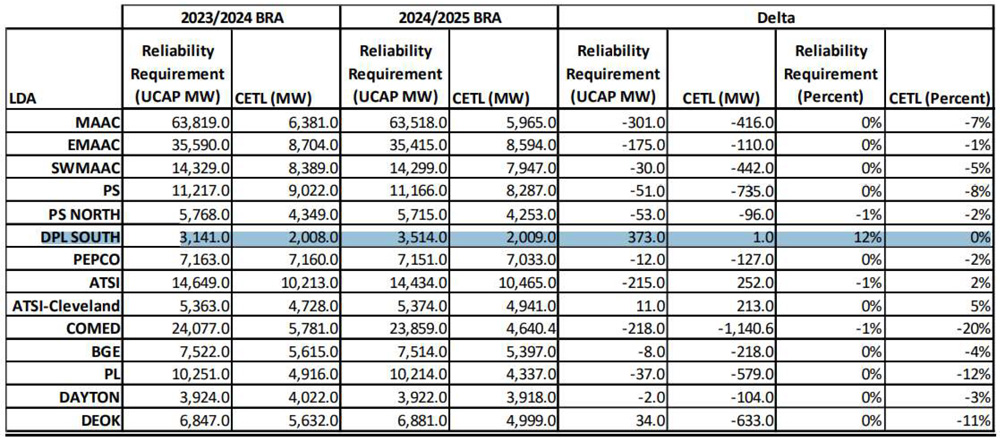FERC last week rejected the sale of American Electric Power’s (NASDAQ:AEP) Kentucky operations to Algonquin Power & Utilities (NYSE:AQN) subsidiary Liberty Utilities, ruling that the companies failed to prove that the transaction would not adversely affect rates (EC22-26).
Under the agreement filed with FERC a year ago, and amended in October, AEP would sell Kentucky Power — a vertically integrated utility with 1,075 MW of generation — and Kentucky Transco to Liberty for $2.646 billion. (See AEP Accepts Lower Price for Kentucky Operations Sale.)
But the commission found that the companies’ commitment to hold customers harmless for all “transaction-related costs” for five years was not sufficient to demonstrate that the sale would not have an adverse impact. The application notes that the pledge is not a rate freeze and that Liberty would be able to seek rate changes to reflect their full costs of service.
The commission said that an “increase in rates that results from a transaction is not the equivalent of a transaction-related cost” and suggested that the applicants could have included a projection of the impact to rates following the sale.
“Applicants’ representations do not provide complete information upon which to evaluate the effect of the proposed transaction on rates,” the commission said. “To support their position, applicants could have, for example, included a comparison of rates currently in effect to a projection of rates once the proposed transaction is consummated.”
Both the Kentucky Public Service Commission and a group consisting of American Municipal Power, Blue Ridge Power Agency and Wabash Valley Power Association filed protests arguing that the application did not contain enough information to show that ratepayers would not be negatively impacted by the transaction.
The PSC itself gave its approval of the transaction in May, though it stipulated numerous conditions to protect consumers. (See PSC OKs Sale of AEP’s Kentucky Operations to Liberty Utilities.)
The cooperative group argued that Liberty should be required to maintain the companies’ current return on equity of 9.85% and the maximum permitted equity component of capital structure of 55%. It also pushed for Liberty to be required to show customer benefits to justify any rate increases during the five-year hold-harmless period and for that pledge to include any cost of debt.
“Applicants further state that, to the extent such costs change as a result of the change of ownership, those changes will not impact customers through the end of 2022 and will be addressed in 2023 and in the future through the formula rate projection and true-up process in the normal course,” FERC said.
The commission dismissed the application without prejudice, meaning the companies are free to file a new application “that provides adequate information” on its effects on rates.
“If the effect of the proposed transaction on rates is adverse, applicants should propose adequate ratepayer protection or mitigation to address that adverse effect, or otherwise demonstrate specific benefits due to the proposed transaction that offset such effect,” FERC said.
Danly Concurs, but with Criticism of Commission
Though he concurred with the decision, Commissioner James Danly criticized the time FERC took to rule on the deal and for not requesting additional data or changes to mitigate any rate effects. The companies initially filed the application for the transaction in December 2021; on June 3 they requested that the commission authorize the transaction no later than June 21 to allow the deal to close on schedule in mid-2022.
“Instead, having waited six months to reach the same conclusion we had come to before — that we did not have enough information — we have merely impeded the actions that the applicants could have taken to move ahead with the proposed transaction, such as filing a new application with needed information, perhaps after consultation with commission staff,” he said.
Had the commission sought additional information, Danly said, it may have been possible to receive a satisfactory rate commitment within a few months. By requiring the companies to file a new application, the commission made it difficult for companies and investors to make business decisions, he said.
“It is nearly impossible to rationally allocate capital and conduct business responsibly when it is unclear who will own that business or when the decision regarding the disposition of jurisdictional assets will be made. When we delay these decisions, employees and leadership of both entities live under a cloud of uncertainty. Shareholders are unable to properly determine the value of their shares,” he said.
Phillips also Concurs
Commissioner Willie Phillips also issued a concurrence, saying that he would have preferred a conditional approval of the application. He noted the commission has rarely denied similar applications and has instead granted conditional authorization with market power mitigation measures.
“I recognize those cases may be distinguishable in certain respects but would have preferred to have taken that approach here by providing joint applicants with clear guidance on possible mitigation strategies such as a hold-harmless commitment on rates, not just transaction costs, or a rate freeze that assures the commission that transmission customers will not feel adverse effects from this transaction,” he wrote.







